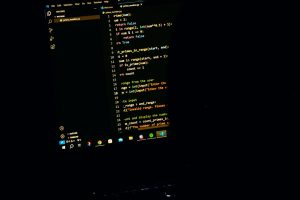How Universities Detect AI in Student Assignments
4 min read
The rise of AI tools like ChatGPT and Jasper has transformed how students approach assignments. While these tools can be helpful for brainstorming and drafting, they pose challenges to academic integrity when used improperly. Universities are increasingly adopting methods to detect AI-generated content in student submissions. This article explores how institutions identify AI-generated work, the tools they use, and the challenges of maintaining fairness and accuracy in detection.
Understanding AI-Generated Content
AI-generated content refers to text created by artificial intelligence models trained on vast datasets. Tools like OpenAI’s ChatGPT produce coherent, well-structured responses to prompts, making them attractive to students seeking quick solutions.
Unlike human-written content, AI text often exhibits unique patterns, such as:
- Consistent tone and structure across long passages.
- Lack of personal insights or creative flair.
- Repetitive phrases or overuse of formal language.
These traits, while not definitive proof, can raise red flags during evaluations.
Why Detecting AI Matters in Academia?

AI in assignments challenges the core principles of education, which rely on originality and critical thinking. Undetected AI use can lead to:
1. Compromised Learning
When students rely on AI tools to complete assignments, they miss out on the essential learning process. Assignments are crafted to develop critical thinking, analytical skills, and in-depth understanding of topics. Using AI shortcuts denies students these opportunities.
For instance, if a history assignment is written entirely by AI, the student skips the crucial steps of researching and evaluating historical sources. This approach leaves significant gaps in their knowledge and reduces their readiness for future challenges.
2. Unfair Assessments
Undetected AI usage skews academic evaluations. Honest students who put effort into completing their work are at a disadvantage compared to peers who leverage AI tools to produce polished outputs.
This imbalance erodes trust in the grading system. It becomes difficult for educators to assess genuine understanding or reward effort appropriately, fostering resentment among students who follow the rules.
3. Erosion of Academic Integrity
Academic integrity relies on honesty and originality. When AI-generated assignments go undetected, they compromise the credibility of educational institutions. Over time, this undermines the value of degrees and certifications.
A university that fails to address such issues risks damaging its reputation. Employers may question the qualifications of graduates, and students may view dishonest practices as acceptable, further perpetuating the cycle of diminished integrity.
4. Loss of Independent Thinking
Overusing AI for assignments discourages students from cultivating their creativity and problem-solving abilities. Education aims to empower individuals to think independently, yet reliance on AI stifles this growth.
Imagine a student tasked with creating a business proposal who instead uses AI to generate ideas and structure. They miss out on the opportunity to brainstorm, refine concepts, and develop practical problem-solving skills—key abilities needed in their career.
Tools Universities Use to Detect AI
Modern AI detection tools are designed to identify patterns in text that indicate machine generation. Popular options include:
- Turnitin: A widely used plagiarism checker that now incorporates AI detection capabilities. It analyzes linguistic patterns and compares text to known AI outputs.
- GPTZero: A tool specifically built to detect AI-generated text by measuring randomness and sentence complexity.
- AI Writing Check: A lightweight tool that flags text likely produced by AI.
Methods for Identifying AI-Generated Assignments
Detecting AI-generated content goes beyond tools and software. Universities use a combination of strategies:
1. Linguistic Analysis
AI text often lacks the subtle nuances of human writing. Educators look for patterns like overly formal tone, repetitive phrases, or unusual sentence structure.
2. Comparing Writing Samples
Inconsistencies between a student’s past work and current submissions can indicate AI use. Significant improvements in grammar and style without explanation may warrant further review.
3. Faculty Training
Educators are trained to recognize AI-specific traits and use detection tools effectively. Combining human expertise with AI tools increases the chances of accurate identification.
4. Designing AI-Resistant Assignments
Creating unique and personalized tasks reduces the effectiveness of AI tools. For example, assignments that require referencing specific class discussions or personal reflections are harder for AI to replicate.
Challenges in Detecting AI Content
As AI models become more sophisticated, distinguishing machine-generated content from human writing is increasingly difficult.
- Improved AI Writing: Advanced models like GPT-4 produce text that closely mimics human styles.
- False Positives: Detection tools may flag genuine work as AI-generated, leading to unfair consequences for students.
- Hybrid Submissions: Students might edit AI-generated drafts, blending machine and human inputs, making detection harder.
- Privacy Concerns: Analyzing student submissions raises ethical questions about data security and consent.
Strategies to Maintain Academic Integrity
Universities can adopt proactive measures to minimize misuse of AI tools:
- Educate Students: Promote ethical AI usage through workshops and clear guidelines. Encourage students to view AI as a supportive tool rather than a replacement for effort.
- Update Academic Policies: Include explicit rules about AI usage in assignment submissions and outline consequences for misuse.
- Leverage Technology: Use AI detection tools as part of a broader strategy that includes manual review and contextual analysis.
- Revamp Assignments: Incorporate elements that require personal insight, real-world application, or oral presentations to discourage overreliance on AI.
Conclusion
Detecting AI in assignments is an ongoing challenge for universities as AI tools evolve. By combining advanced detection software with faculty training and updated academic policies, institutions can safeguard academic integrity while encouraging responsible AI use.
How do you think AI will impact academic evaluations in the future? Share your thoughts in the comments below!



